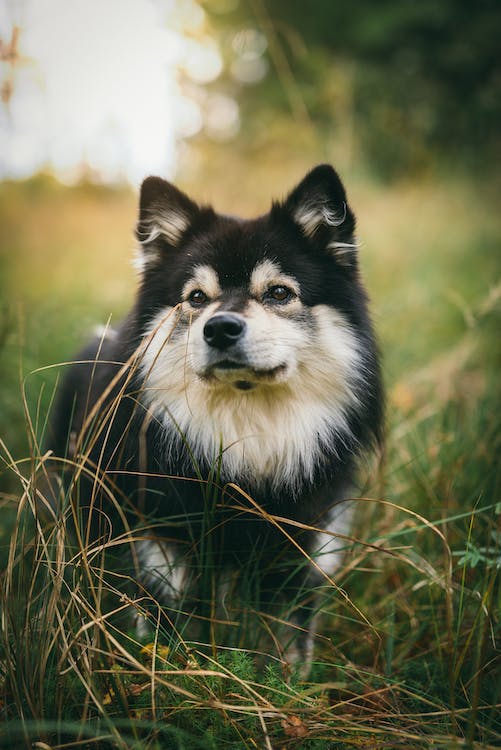Alert, kind, lively, and loving, the Swedish Lapphund isn’t chosen as the Scandinavian country’s national for nothing. He’s incredibly multitalented, full of toughness and endurance, and became a hardworking canine for over many centuries. Today, he serves as a wonderful family companion, highly energetic and playful, yet also knows when to switch things off and just relax and chill with his beloved humans. While rare outside his homeland, people who have discovered this breed know how fun he is to have at home.
Origins of the Swedish Lapphund
The Swedish Lapphund is one of the oldest breeds in existence. These dogs were the canine partners, acting as hunting and guarding dogs, of the Sami people from Lappland, a region comprising northern Sweden, Finland, Norway, and northwestern Russia. As the Sami people started settling and began domesticating reindeers, the Swedish Lapphund expanded their repertoire and developed herding skills.
Lappies, as they are fondly called, became excellent herding dogs due to their vocal talent. Sami people loved their unique, high-pitched bark, enough to keep predators away, and enough for the reindeers to distinguish that Lapphunds are their friends and not a foe.
In the mid-20th century, the Swedish Lapphnds were on the brink of extinction. Fortunately, several breeders took the cause and were able to revive the breed through their dedicated efforts. In 1903, the Swedish Kennel Club recognized the breed while the United Kennel Club granted it its full recognition in 2006. The American Kennel Club is yet to recognize the breed but has added it in its Foundation Stock Service program in 2007.
Characteristics of the Swedish Lapphund
Height: 16-20 inches
Weight: 30-45 pounds
Life Expectancy: 12-14 years
Hypoallergenic: No
The Swedish Lapphund is a medium-sized, low to the ground dog with a compact and well-defined build. He has a black nose and lips, dark brown ovular eyes, and triangular ears, which are erect with rounded tips. Further features include the Spitz tail carried high on the rump and extending to the hock when it is stretched or uncurled. He has a dense double sense coat, found in solid black or liver, though having white markings on the chest, feet, and the tip’s tail is also acceptable.
The Lappie is a warmhearted and devoted dog that loves his people, especially children! Fun-loving and lively, he is happy to play with kids. However, it must be under supervision as he has a high herding instinct, causing them to nip at them to “herd them.”
An affectionate dog, the Swedish Lapphund needs to live inside the house close to his family. If kept outdoors or left alone for extended periods, he can be unhappy and form destructive behavior or become a nuisance barker, causing problems to the other people in the vicinity. With that, he needs ample training and be taught to stop barking when being commanded.
With his herding lineage, the Swedish Lapphund loves to run, hike, and play when they are outdoors. He is also amenable to travel and ride in a car, or go camping, as long he is with his family. Don’t be surprised to see him greet other people at the campsite as he is that friendly. However, he may scare other dogs and animals with his distinct bark.
Once you get home from a fun-filled day, the Lappie has a “chill switch” and knows that it’s time to relax with the rest of the family, making him a family favorite in many homes. Just devote time and attention to him, and he will turn to be a rewarding canine companion.
Caring for the Swedish Lapphund
The Swedish Lapphund has a dense double coat that sheds seasonally in an average amount. He needs weekly grooming with a metal comb or pin brush to remove loose and dead hair. In some cases, a de-matter or deshedder can be handy to keep fur problems at bay. Weather and dirt resistant, his coat rarely needs bathing. Clipping his coat is also not recommended as it can alter the hair shafts, which can then permit water to sip in.
As with other dog breeds, regular nail trimming, ear cleaning, and teeth brushing are essential parts of the Lappie’s grooming upkeep and must be introduced to him at an early age.
His barking tendencies is probably the biggest challenge when it comes to training. Fortunately, he responds to training pretty well and learns quickly. Using positive reinforcement and giving rewards, alongside patience and consistency, usually gets the job done.
Then, as an active breed and to help curtail his nuisance barking, the Lapphund needs one to two hours of exercise each day. It can take many forms, such as bringing him to a walk, completing an obstacle course, agility trials, games, or play sessions.
In terms of health, the Lappie is a hardy and long-lived dog. However, the breed is known to suffer from diabetes mellitus, a condition characterized by a deficiency in insulin that is a key hormone in regulating glucose metabolism. Symptoms of diabetes include weight loss and excessive thirst. Plus, dogs can be nauseous and depressed as the condition progresses. Other health concerns that affect the breed include progressive retinal atrophy and hip dysplasia.
If you want to get a Lappie, be it from a breeder or adopt one from a shelter or rescue, make sure to deal with a reputable breeder or organization to ensure you get healthy pups. Once you have him, never miss regular vet visits, proper nutrition, parasite control, and necessary immunizations for his optimum health and ensure that he’ll be your longtime canine pal.

